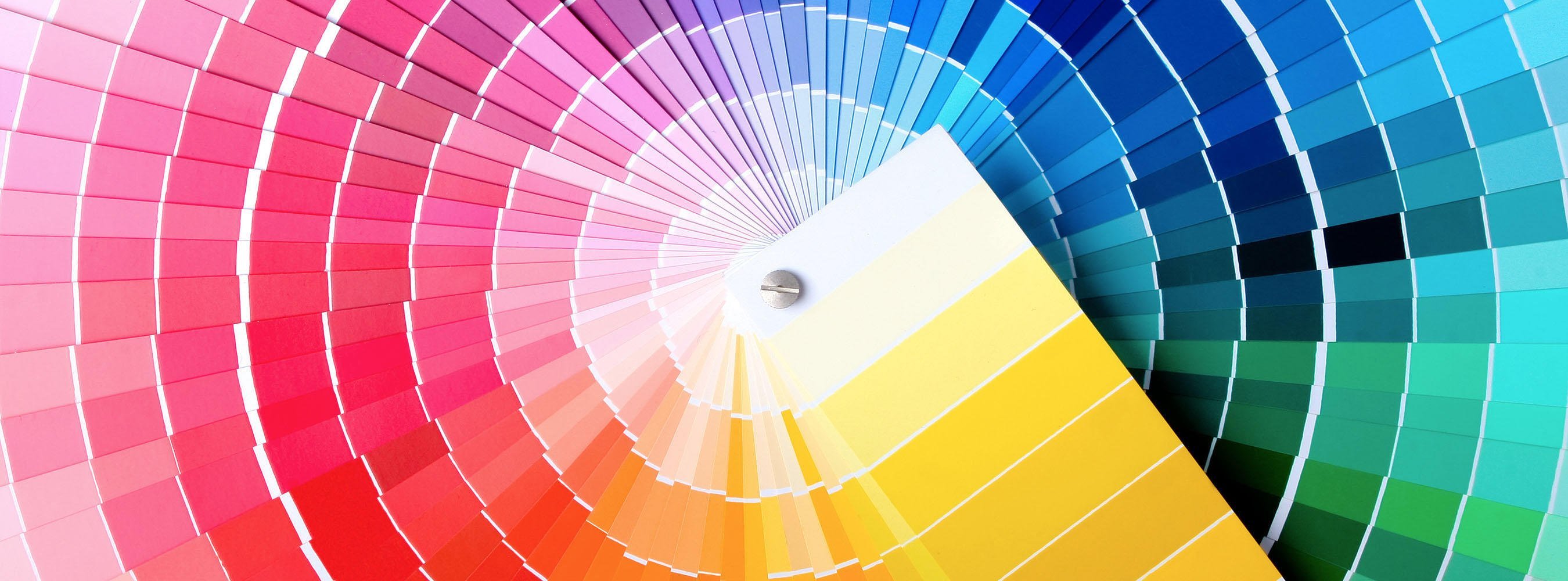The Psychology of Brand Colours A Powerful Marketing Tool

Colours profoundly impact our emotions; this psychological connection is a cornerstone of marketing. Using the right colours in your campaigns can evoke specific feelings in clients, compelling them to purchase or learn more about your product. Building a brand that stands out in the market and resonates with your audience requires an understanding of the emotional resonance of each colour.
This article will touch on the psychology of brand colours, their importance, the advantages of using them in marketing, and the emotional significance of various colours, with advice on choosing the perfect colour palette for your brand.
A Deeper Dive into the Psychology of Brand Colours
The psychology of brand colours studies how colours influence current and potential clients' perceptions of a brand. Colours affect people's emotions, behaviours, and buying decisions. Leveraging this is a powerful tool in brand design. It provides a framework for understanding how and why individuals engage with brands, which may vary depending on factors such as core client traits and preferences. Most colours represent specific emotions, so it's best to choose brand colours that evoke the feelings you want your clients to experience when they see your brand.
Why Does It Matter?
For many companies, their brand's colour can hold great significance in their marketing efforts. Take some well-known restaurants, for instance; they have iconic logos and familiar colours that help clients instantly associate delicious food with the hues in their branding. Here are a few reasons why the psychology of brand colours is so important:
1. Equipping Marketing Teams
Marketers use a wide array of tools to craft strategies, and the psychology of colours adds an extra dimension that contributes to building a company’s brand.
2. Boosting Reputation
As a brand grows in popularity, clients start associating the logo, including its colours, with the product itself, helping to enhance the brand’s reputation.
3. Making Your Brand Stand Out
Using the right colours in marketing materials grabs your audience’s attention, sparks their curiosity, and encourages them to explore the other content you have to offer.
The Benefits of Using Colour Psychology in Marketing
It’s essential to grasp how colour psychology works to truly engage your target audience, improve their perception of your brand, and convey a specific image or message through colour. Some of the benefits of using colour psychology include:
1. Showcasing the Brand
When you use specific colours to communicate certain messages, your target audience may more easily recognise your brand’s image or understand the messages you want to convey. The more clients recognise your brand, the more likely they’ll choose your products or services.
2. Strengthening Your Bonds with Clients
Certain colours can stir particular emotions in both prospective and existing clients. You can use colour schemes to evoke feelings of happiness, nostalgia, or excitement, which can prompt clients to make a purchase.
3. Creating a Positive Brand Image
Choosing the right colour can improve how clients feel about your brand. Your content captures attention and projects your professionalism when it is visually appealing and easy to read.

9 Brand Colours and Their Meanings
Each colour evokes specific emotions and behaviours among different audiences. Here are nine popular brand colours and their meanings:
1. Blue
According to colour psychology studies, blue is the most preferred colour globally. This widespread preference suggests that blue is peaceful, conservative, and traditional. However, it’s one of the least appetising colours, as it’s often associated with spoiled food. For instance, weight loss plans sometimes suggest eating from blue plates to curb overeating.
|
Positive associations |
Negative associations |
|
Trust |
Coldness |
|
Loyalty |
Sadness |
|
Calmness |
Detachment |
|
Logic |
Appetite suppression |
|
Serenity |
Isolation |
2. Yellow
Yellow is typically used to represent new ideas and creative projects. It symbolises sunshine, evoking optimism and happiness. It’s one of the most attention-grabbing colours and is associated with joy and warmth. Many brands use this colour during the summer to showcase new items or seasonal sales. It’s also occasionally used as a warning but generally creates a positive vibe.
|
Positive associations |
Negative associations |
|
Optimism |
Impulsiveness |
|
Energy |
Fear |
|
Fun |
Caution |
|
Creativity |
Anxiety |
|
Thoughtfulness |
Cowardice |
3. Purple
Purple means royalty, as it's often linked with luxury, power, and wisdom. Most brands use it in balance or as a standout colour. Lighter shades evoke feminine or romantic feelings, while darker tones may symbolise sadness or frustration. Some people associate purple with the cosmos, space, or time.
|
Positive associations |
Negative associations |
|
Wisdom |
Decadence |
|
Luxury |
Oppression |
|
Wealth |
Inferiority |
|
Curiosity |
Extravagance |
|
Sophistication |
Moodiness |
4. Grey
Many businesses use grey to symbolise balance and neutrality. However, grey can appear dull on its own, so it’s best used with other colours. It’s often viewed as refined, luxurious, and powerful, which is why technology and automobile companies frequently use it.
|
Positive associations |
Negative associations |
|
Balance |
Distrust |
|
Immortality |
Drabness |
|
Neutrality |
Depression |
|
Reliability |
Isolation |
|
Intelligence |
Monotony |
5. Orange
Orange represents success, creativity, and enthusiasm. If you want to brighten up a graphic or pass a playful image, orange is your answer. It’s also used for CTA on websites because it’s motivating. Orange is commonly seen in autumn, and it’s often associated with the season and used to promote fall sales or products.
|
Positive associations |
Negative associations |
|
Optimism |
Introversion |
|
Courage |
Frustration |
|
Warmth |
Immaturity |
|
Innovation |
Ignorance |
|
Friendliness |
Hypocrisy |
6. Black
Black means strength. It’s the absence of light, so it can imply pessimism, mystery, or elegance. Using black alone can stir feelings of sadness or anger, but combining it with more vibrant colours can balance this out. Some brands use black text over bright backgrounds for readability, though this can sometimes backfire. Black text on a white background offers the ideal contrast.
|
Positive associations |
Negative associations |
|
Sophistication |
Depression |
|
Security |
Detachment |
|
Power |
Negativity |
|
Elegance |
Distress |
|
Authority |
Evil |
7. Green
Nature is mostly green, so people naturally associate the colour with it. Many eco-friendly companies use green in their branding. It also signifies success, generosity, and health. Brands in the health and fitness industries often use green in their marketing. However, too much green or the wrong shade can provoke feelings of stagnation or isolation.
|
Positive associations |
Negative associations |
|
Hope |
Boredom |
|
Optimism |
Envy |
|
Freshness |
Materialism |
|
Logic |
Immaturity |
|
Prosperity |
Illness |
8. Red
Red is commonly used to stir strong emotions, generating excitement and action. It’s recommended for established companies confident in their marketing strategies. Softer shades of red can make a brand appear less aggressive. You can use red for product buttons or sale tags to emphasise strong emotions.
|
Positive associations |
Negative associations |
|
Energy |
Anger |
|
Action |
Revenge |
|
Passion |
Violence |
|
Strength |
Danger |
|
Excitement |
Pain |
9. White
White is the reflection and absence of all colours. It’s used by healthcare companies to symbolise cleanliness and to calm patients. Some tech brands use it to imply modernity. It’s a mild colour, so it creates a sense of space and is easy on the eyes, which is why your marketing materials should regularly feature plenty of white space.
|
Positive associations |
Negative associations |
|
Cleanliness |
Emotional dullness |
|
Independence |
Coldness |
|
Purity |
Detachment |
|
Simplicity |
Isolation |
|
Innocence |
Indecision |
Tips for Choosing a Brand Colour
Understanding the psychology of brand colours was our first step. The next is offering some tips when picking colours for your brand:
1. Choose a Colour that Fits Your Industry
It’s important to pick a colour that aligns with your industry. This is especially important in certain fields. For example, healthcare services, like hospitals, may avoid using red because it is often associated with pain.

2. Choose a Colour that Reflects Your Brand’s Identity
A brand’s identity evokes emotions, so its colour is one of the most direct ways to express this identity. Choosing a colour that reflects your brand’s identity offers a consistent and cohesive client experience. For instance, a candy company could choose purple to convey luxury.
3. Choose a Colour that Appeals to Your Audience
Understanding your target audience is crucial when picking a colour for your brand. Think of your typical buyer and what colour resonates with them. Try to align your target audience’s characteristics with those of your brand’s colour.
4. Choose a Colour that Differentiates Your Brand
Picking a colour that stands out from your competitors helps your brand stand out. A brand review effectively analyses the colours used by your key competitors, helping you identify opportunities for outstanding. For example, a tech company might choose white if its main competitor uses grey.
Closing Words
Choosing a brand colour necessitates considering your industry and target audience to ensure that the colour aligns with your brand’s values and identity. Additionally, picking a unique colour can make it stand out, creating a strong and distinctive visual identity.
Ultimately, the psychology of brand colours is a powerful tool that helps businesses communicate effectively with their clients, build a strong and trustworthy brand, and succeed in a competitive market.